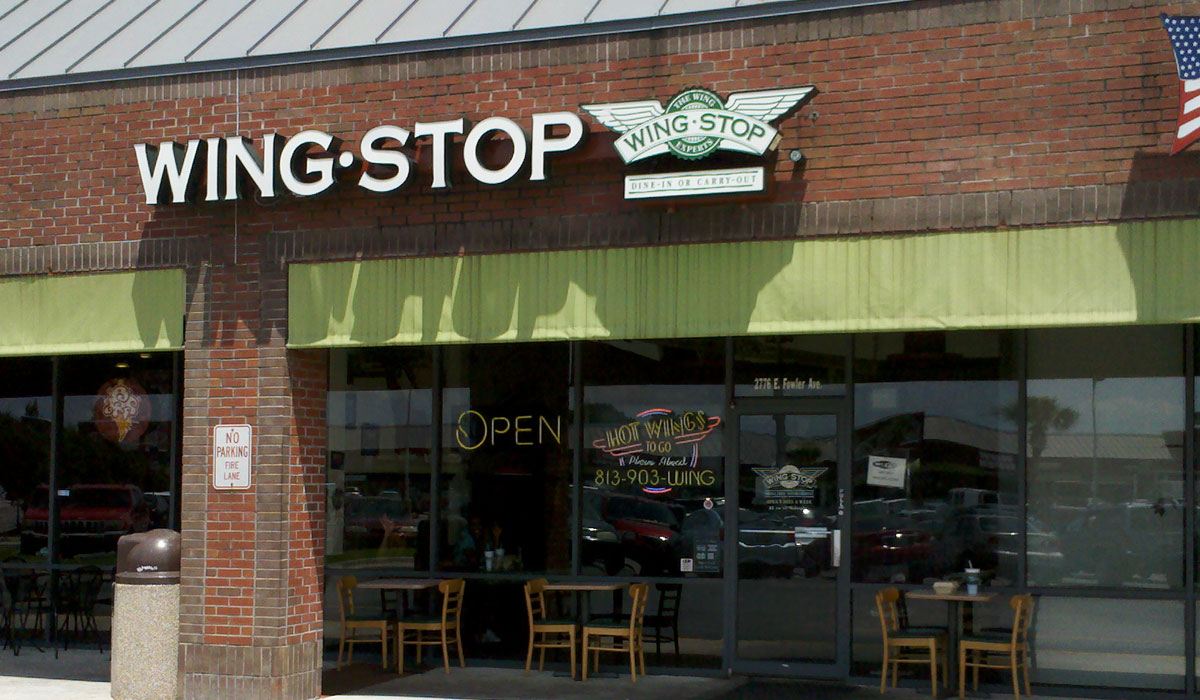After the American restaurant economy—particularly the casual and quick-service sectors—was rocked by a serious chicken wing shortage last year that pushed poultry prices sky-high, restaurants like Wingstop have been due for some good news.
That seemed to come in the form of positive growth across the board for the Dallas–based wing shop, No. 30 on QSR’s Top 50 list, and yet Wingstop stock tumbled on Friday following Thursday evening’s earnings call. Shares fell as much as 7 percent over the course of the day.
So what really happened this year at Wingstop?
During the 2017 fiscal year, the chain added 135 net new restaurants and saw systemwide sales increase 14 percent to $1.1 billion. Total revenue improved a significant 17.5 percent despite the chicken shortage that led to a 680-basis-point increase in food costs at company units.
Chairman and CEO Charlie Morrison said during the earnings call that the wing crisis wasn’t the only adversity his company faced last year, either, but that his company came out of a sticky situation even better than before.
“We began 2017 with negative consumer sentiment coming out of the 2016 Presidential election. Our core consumers were acutely affected and that resulted in negative same-store sales in the first quarter of 2017,” he said.
“Most brands cannot overcome such challenges in any single year, but in our case, though these challenges tested the strength and resilience of Wingstop’s business model, we’ve recorded another record year.”
Despite the shortage and a possible Trump-related slump in sales, the numbers don’t lie—by all accounts, Wingstop had a banner year.
The brand started advertising on national TV last year, which should continue in 2018. Wingstop also doubled down on its technological interests. Mobile ordering is available through Facebook, Twitter, Amazon’s Alexa, and even GM’s OnStar marketplace. Partnering with DoorDash, Wingstop rolled out delivery on a beta scale in Las Vegas, Chicago, and Austin.
While such growth might seem unwieldy, Wingstop handled it incredibly well throughout the year and in the fourth fiscal quarter.
Compared to the final quarter of 2016, systemwide sales leapt 15.6 percent, domestic same-store sales increased 5.2 percent, and revenue jumped 21.9 percent to $28.3 million. Net income more than doubled to $10.5 million, or 36 cents in earnings per diluted share. At the end of 2016, those figures rested at $4.1 million and 14 cents per diluted share, respectively. Globally, the brand grew 13.5 percent in sheer number of units to 1,133 locations around the world.
Since Wingstop beat its projected numbers with ease and wing prices continue to fall, why aren’t investors impressed?
Analysts have suggested the stock market shakiness might be due to Wingstop’s financial guidance for the 2018 fiscal year, which called for systemwide unit growth of 10 percent or more. That’s a slight slowdown from this year, and might be owed to some franchisees slowing development last year in response to skyrocketing wing prices.
If Wall Street is lacking confidence, though, Wingstop is just the opposite. With its current business model firing on all cylinders, expect more of the same strategies from the growth-focused brand in 2018.
“[This year] was really strong confirmation that Wingstop has the right business model,” Morrison said during the call. “As we look ahead, we believe we will continue to deliver best-in-class results as we drive our business forward through four key long-term growth strategies: national advertising, digital expansion, delivery, and international development.”







